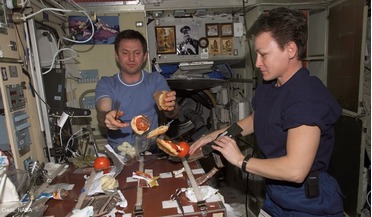 02 November 2020
ISS marks 20 years of humans on board
02 November 2020
ISS marks 20 years of humans on board
... humanity may be lacking key knowledge about space radiation, microgravity effects on people and life-support systems for long-term ...expand human exploration beyond low-Earth orbit, and microgravity research into protein crystal growth and fiber-optic...
 09 February 2021
Norfolk company targets suborbital market
09 February 2021
Norfolk company targets suborbital market
... commercial operations of a space-capable launch vehicle expected to start in 2022. The company was established in 2018 to provide microgravity and short duration space testing solutions that put the customer first; placing convenience, proximity and...
 December 2014
Technology drives space exploration: we won’t make it to Mars without investment
December 2014
Technology drives space exploration: we won’t make it to Mars without investment
... Alexander Gerst, who recently returned to Earth after nearly six months, conducts an experiment in the European-built Microgravity Science Glovebox. More needs to be done to make the resources of the ISS available to the wider research community...
 December 2014
Space for Earth: How ESA wants to use lessons learned above on the ground
December 2014
Space for Earth: How ESA wants to use lessons learned above on the ground
... needs, including contributions from space science, Earth observation (EO), telecommunications, navigation, human space flight, microgravity and launchers. A number of overarching themes have already been identified: energy, oceans, Arctic and...
 October 2015
Eating in space: from Michelin-starred chefs to self-sufficiency
October 2015
Eating in space: from Michelin-starred chefs to self-sufficiency
..., and make food seem less tasty and appealing. More importantly perhaps, as it’s far less easy to mitigate, microgravity and weightlessness makes fluids in the body shift to the head, which has a similar effect to blocked sinuses...
 October 2015
Earth independence: new definitions of home on Mars missions and beyond
October 2015
Earth independence: new definitions of home on Mars missions and beyond
... are conducting a ‘Year In Space’ mission, teaching us how the human body reacts during long-term exposure to microgravity, and how we can mitigate the impacts. In addition to biomedical research, they and future crews will continue...